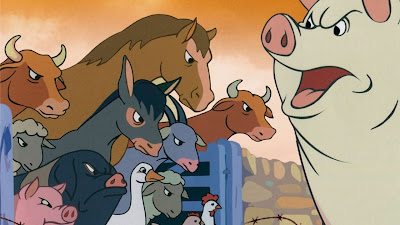 |
| Adam Smith, the 19th-century Scottish philosopher, warned against both monopoly interests and government intervention in private economic arrangements. |
Posted by Keith Tidman
Every nation grapples with balancing things that benefit the community as a whole — the common good — and those that benefit individuals — the private good. Untangling which things fall under each of the two rubrics is just one of the challenges. Decisions hinge on a nation’s history, political philosophy, approach to governance, and the general will of its citizenry.
At the core is recognition that community, civic relationships, and interdependencies matter in building a just society, as what is ‘just’ is a shared enterprise based on liberal Enlightenment principles around rights and ethics. Acting on this recognition drives whether a nation’s social system allows for every individual to benefit impartially from its bounty.
Although capitalism has proven to be the most-dynamic engine of nations’ wealth in terms of gross domestic product, it also commonly fosters gaping inequality between the multibillionaires and the many tens of millions of people left destitute. There are those left without homes, without food, without medical care — and without hope. As philosopher and political economist Adam Smith observed:
‘Wherever there is great property there is great inequality. For one very rich man there must be at least five hundred poor, and the affluence of the few supposes the indigence of the many’.
Today, this gap between the two extreme poles in wealth inequality is widening and becoming uglier in both material and moral terms. Among the worst injustices, however, is inequality not only of income or of wealth — the two traditional standards of inequality — but (underlying them both) inequality of opportunity. Opportunity as in access to education or training, meaningful work, a home in which to raise a family, leisure activity, the chance to excel unhampered by caste or discrimination. Such benefits ultimately stem from opportunity, without which there is little by way of quality of life.
I would argue that the presence or absence of opportunity in life is the root of whether society is fair and just and moral. The notion of the common good, as a civically moral imperative, reaches back to the ancient world, adjusting in accordance with the passage and rhythm of history and the gyrations of social composition. Aristotle stated in the Politics that ‘governments, which have a regard to the common interest, are constituted in accordance with strict principles of justice’.
The cornerstone of the common good is shared conditions, facilities, and establishments that redound to every citizen’s benefit. A foundation where freedom, autonomy, agency, and self-governance are realised through collective participation. Not as atomised citizens, with narrow self-interests. And not where society myopically hails populist individual rights and liberties. But rather through communal action in the spirit of liberalised markets and liberalised constitutional government institutions.
Common examples include law courts and an impartial system of justice, accessible public healthcare, civic-minded policing and order, affordable and sufficient food, thriving economic system, national defense to safeguard peace, well-maintained infrastructure, responsive system of governance, accessible public education, libraries and museums, protection of the environment, and public transportation.
The cornerstone of the private good is individual rights, with which the common good must be seeded and counterweighted. These rights, or civic liberties, commonly include those of free speech, conscience, public assembly, and religion. As well as rights to life, personal property, petition of the government, privacy, fair trial (due process), movement, and safety. That is, natural, inalienable human rights that governments ought not attempt to take away but rather ought always to protect.
One challenge is how to manage the potential pluralism of a society, where there are dissimilar interest groups (constituencies) whose objectives might conflict. In modern societies, these dissimilar groups are many, divided along lines of race, ethnicity, gender, country of origin, religion, and socioeconomic rank. Establishing a common good from such a mix is something society may find difficult.
A second challenge is how to settle the predictable differences of opinion over the relative worth of those values that align with the common good and the private good. When it comes to ‘best’ government and social policy, there must be caution not to allow the shrillest voices, whether among the majority or minority of society, to crowd out others’ opinions. The risk is in opportunity undeservedly accruing to one group in society.
Just as the common good requires that everyone has access to it, it requires that all of us must help to sustain it. The common good commands effort, including a sharing of burdens and occasional sacrifice. When people benefit from, but choose not to help sustain it (perhaps like a manufacturer’s operators ignoring their civic obligation and polluting air and water, even as they expect access themselves to clean resources), they freeload.
Merit will always matter, of course, but as only one variable in the calculus of opportunity. And so, to mitigate inequality of opportunity, the common good may call for a ‘distributive’ element. Distributive justice emphasises the allocation of shared outcomes and benefits. To uplift the least-advantaged members of society, based on access, participation, proportionality, need, and impartiality.
Government policy and social conscience are both pivotal in ensuring that merit doesn’t recklessly eclipse or cancel equality of opportunity. Solutions for access to improved education, work, healthcare, legal justice, and myriad other necessities to establish a floor to quality of life are as much political as social. It is through such measures that we see how sincere society’s concerns really are — for the common good.









